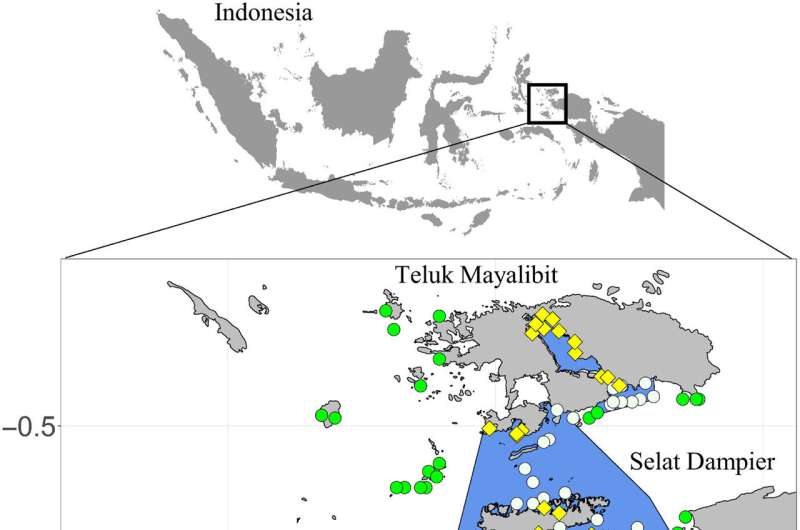June 2, 2022 report
Study of Indonesian protected marine areas suggests participation by Indigenous people more effective than penalties

A team of researchers affiliated with multiple entities in Indonesia and the U.S. has found that allowing Indigenous people to participate in management of protected marine areas is more effective than simply assessing penalties for violators. In their paper published in the journal Science Advances, the group describes their study of the volume of biomass in several parts of Bird's Head Seascape in Indonesia, which is part of what is known as the Coral Triangle.
Over the past several years, officials in Indonesia have recognized the need to protect parts of the sea surrounding their many-islanded nation. To that end, they have designated some areas as wholly protected and others as multiuse marine protected areas (MPAs), which means that they are protected in general, but fishing and some other activities by some people is allowed. Also, some MPAs are protected by laws that prohibit certain activities such as taking more than a certain number of fish; other MPAs are protected by the Indigenous people that live there. In this new effort, the researchers looked at the two approaches to determine which works best.
The approach involved analyzing a decade's worth of data from entities working in the Bird's Head Seascape area. The data covered hundreds of sites in four specific MPAs where fishing by Indigenous people is allowed. To measure the degree of protection at a given site, the team used the amount of fish biomass—the total mass of all the fish in a given area. Biomass measurements were obtained via questionnaires, discarded fishing equipment and camera surveillance. The team then compared the total biomass in a given area over time with the way the area was managed—by penalties or by Indigenous people running things.
The researchers found larger sustained amounts of biomass in areas controlled by Indigenous people compared to those controlled by state officials doling out penalties for infractions. The researchers suggest that allowing Indigenous people to manage MPAs is a better approach than heavy-handed penalties. They further suggest that more MPAs should be handed over to Indigenous people as a means for protecting coastal areas throughout Indonesia—and perhaps other parts of the world.
More information: Robert Y. Fidler et al, Participation, not penalties: Community involvement and equitable governance contribute to more effective multiuse protected areas, Science Advances (2022). DOI: 10.1126/sciadv.abl8929
Journal information: Science Advances
© 2022 Science X Network





















